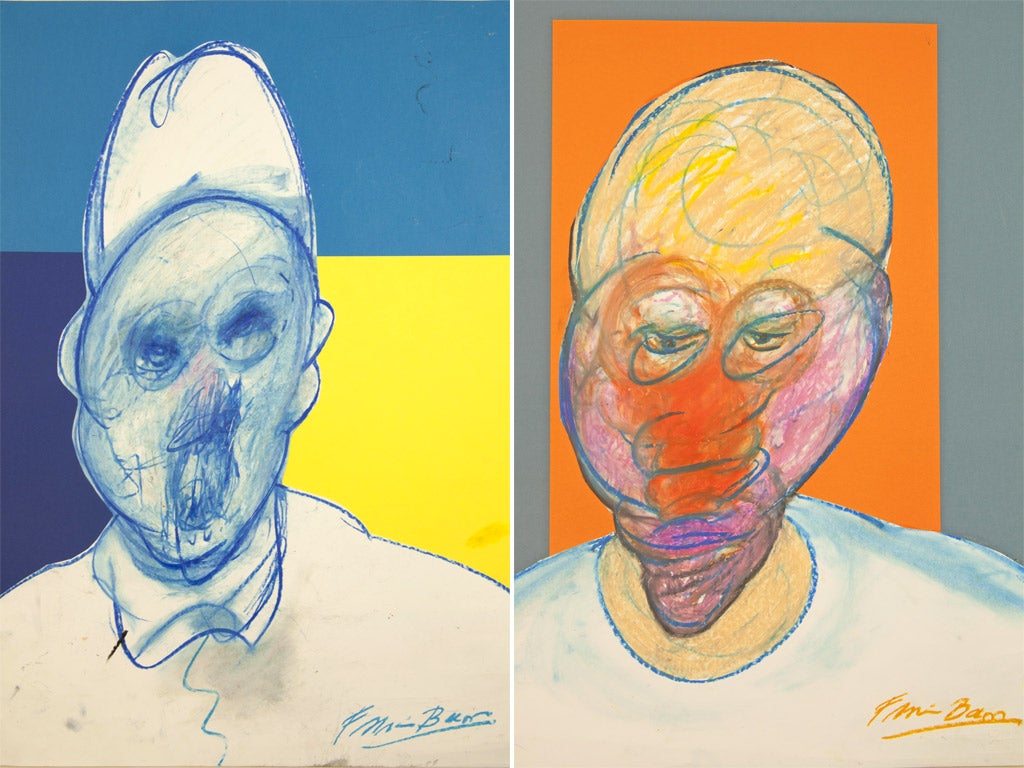Are these Bacon artworks really kosher?
Experts split over supposed lover's claim that hoard of drawings is work of revered artist

An Italian who claims to have been Francis Bacon's lover for 15 years is fighting to prove the authenticity of hundreds of drawings which he says were given to him by the artist.
Cristiano Lovatelli Ravarino, from Bologna, insists they are gifts marking a relationship that endured until Bacon's death in 1992, but experts are divided about their origin and the drawings are now expected to be debated at the Courtauld Institute of Art in London next month.
Opinion could not be more polarised. Edward Lucie-Smith, a leading art historian, told The Independent that he did not doubt the drawings were the work of Bacon, arguably Britain's foremost 20th-century master whose works now change hands for millions of pounds.
Conceding that some drawings were not as good as others, he saw the master in images such as depictions of priests, related to Bacon's iconic Popes after Velázquez.
"They are the work of a Laocoön, a man struggling hard to escape from the entwining serpents of his own myth, and to return to the pleasure of making art for its own sake – no other reason than that," he said.
However, Martin Harrison, editor of The Francis Bacon Catalogue Raisonné, a definitive study to be published in 2013, does not detect the artist's hand: "Anyone who's not blind ought to know from about three countries away," he said. "The whole thing would hinge first of all on the likelihood... that Bacon made 600 presentation drawings."
Although Bacon denied making the preparatory drawings, authenticated sketches were found in his studio and others were given to the poet Stephen Spender and later acquired by the Tate. There is also an early filmed interview in which he admitted drawing. But unlike the Ravarino drawings, those were not signed.
"They're works to a purpose," Harrison said. But Lucie-Smith responded: "If I give a book I've written to a friend, I sign it. Why wouldn't Bacon sign drawings given to a close friend? It would seem odd to me if he didn't."
While Harrison questioned whether Ravarino was ever Bacon's lover, Lucie-Smith spoke of witnesses. "Bacon regarded his relationship with Ravarino as unofficial, in the sense that he could never get his friend to commit himself to something fully public – Ravarino worried what his family would say. One of his favourite places for escapes... was Italy. A constant companion in his Italian adventures was... Ravarino... they were often seen together."
Umberto Guerini, Ravarino's lawyer, named several art historians who support the drawings' authenticity, and claims to have clinching evidence in scientific tests of the paper and studies of the signatures by a graphologist. He welcomed the chance to show the drawings at the Courtauld.
Titled 'The Challenges of Authenticity: Francis Bacon, A Case Study' it will take place on 25 January
Subscribe to Independent Premium to bookmark this article
Want to bookmark your favourite articles and stories to read or reference later? Start your Independent Premium subscription today.

Join our commenting forum
Join thought-provoking conversations, follow other Independent readers and see their replies